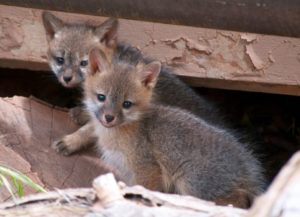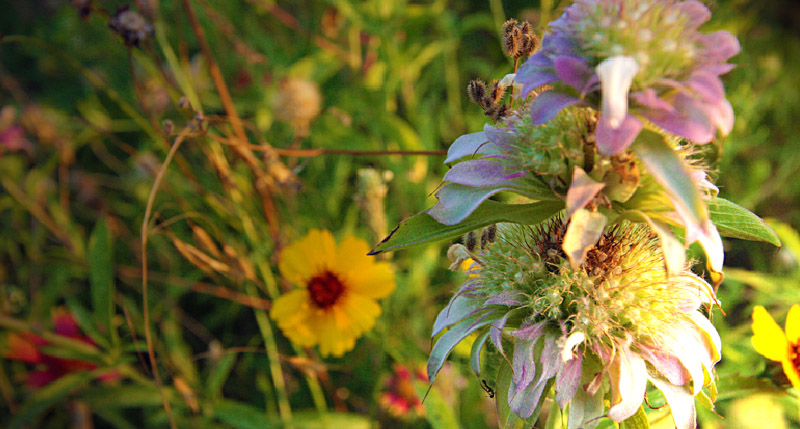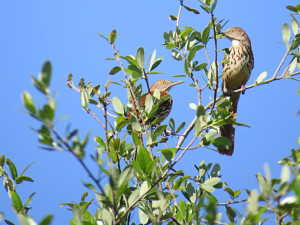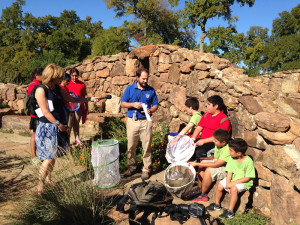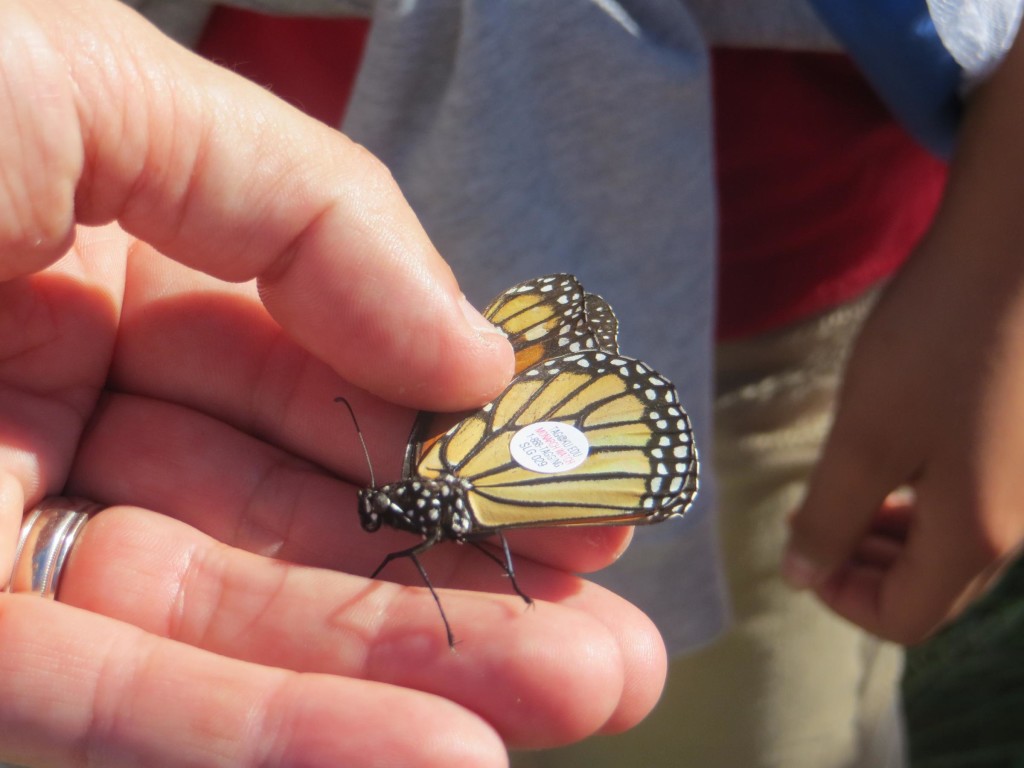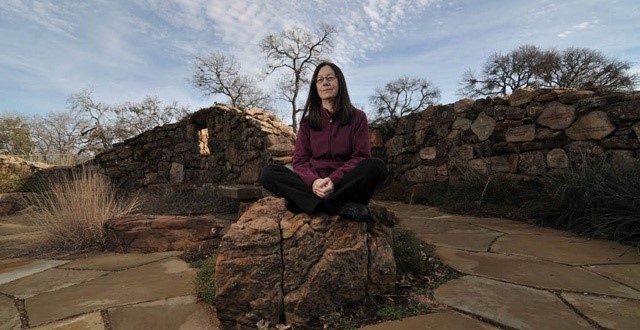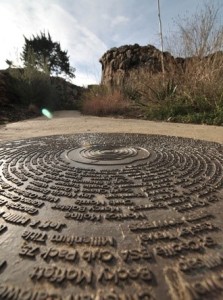 Traces of demolished apartments remain — scattered pieces of broken concrete, wire and pipe hidden among grasses and weeds. Yet this plot of land in north Oak Cliff isn’t an overgrown ruin but a carefully planned and maintained urban nature preserve, the Twelve Hills Nature Center. The Oak Cliff concrete jungle is an inextricable part of Twelve Hills, an oasis striving to reclaim the native blackland prairie that once covered the city.
Traces of demolished apartments remain — scattered pieces of broken concrete, wire and pipe hidden among grasses and weeds. Yet this plot of land in north Oak Cliff isn’t an overgrown ruin but a carefully planned and maintained urban nature preserve, the Twelve Hills Nature Center. The Oak Cliff concrete jungle is an inextricable part of Twelve Hills, an oasis striving to reclaim the native blackland prairie that once covered the city.
Twelve Hills, located north of Davis and south of the Stevens Park Golf Course, has been a nature center for only a few years, but the land it inhabits could tell stories of disputes, deterioration and destruction from decades past.
The apartments
Not much of note happened on the land before the late 1950s, when a complex of 12 apartment buildings — some adorned with chandeliers and carpet — were built on roughly 20 acres and came to be called the Twelve Hills apartments.
“It was a nice community. There were always children out,” says Jarrell Carter, who grew up in the apartments from 1961-1969. “There was a swimming pool in the center of every apartment complex. It was sort of a meeting place. After work, after dinner, people would sit around the swimming pool and talk.”
Some of the land was undeveloped and Carter would frequent a limestone outcropping known as “the rocks.”
“It was really easy to go down, dig around and find fossils and shells. It wasn’t a nature preserve, but it was nature right in your hand,” Carter says.
Times changed. During the 1970s, fires, theft and crime became more frequent at the apartments. By the ’80s, Twelve Hills had deteriorated and neighbors were calling for its demolition. Only 35 people lived in the 500 units by 1989. Eventually, the buildings were vacated, windows were broken, walls and roofs collapsed and the decaying complex attracted even more crime.
A series of Dallas Morning News articles in the late ’80s and early ’90s exposed holes in a City of Dallas plan to renovate derelict apartments with federal funds. Twelve Hills was the centerpiece of the plan. After reports that investors would benefit from renovations more than the low-income families who would move in, the city backtracked and began exploring demolition costs. The initial estimate of a $280,000 cost to taxpayers skyrocketed to more than $1.2 million when the buildings were found to be seeped in asbestos.
Finally in 1992, the apartments were torn down and the debate began over what to do with the land, which the city had taken over because of the landowners’ failure to pay taxes.
“This land and how it is used will be critical to the neighborhoods around it,” Bob Stimson, who at the time was a Dallas city councilman, told the Dallas Morning News in 1996. “As the city goes after more and more property for back taxes, especially deteriorating apartment complexes, this will continue to come up.”
An oasis
At a 1999 neighborhood meeting concerning the land, Bebe Gomez of St. Cecilia Catholic School stood up and said that talks of a gated, high-end housing development would do nothing to help the community, that walls and gates would only divide it. This was before Dallas ISD took over part of the land and before entrepreneur Matt Holley bought the rest. The community had been debating different options, including residential development on all 20 acres.
After the meeting, Jennifer Touchet and several neighbors moved by Gomez’s words discussed creating a nature preserve that could serve the neighborhood as well as the entire Oak Cliff community.
“In our original vision, we talked about how we would love to be a model for other distressed communities and what they could do with tracts of land,” Touchet says.
The site for her represented hope and redemption, she says.
“It wasn’t just the land. We were about a vision and values and trying to bring something, bring a different set of values to the neighborhood,” Touchet says. “When the apartments were there, they were really bad. There were fires and drug dealings. A lot of people, especially older people, wanted some healing to happen in the neighborhood, and I think that’s what we did.”
Touchet and a group of individuals passionate about the cause asked an urban biologist to visit the property, look at the plants and wildlife, and advise whether it was worth preserving. It was, the urban biologist told them.
So for four years, the group worked with landscape architects, talked with city councilmen, gathered 900 signatures on a petition supporting the preserve and secured a nonprofit status for the Twelve Hills Nature Center. They also succeeded in rezoning five acres of the land to be used only for green space.
The group had something different than a park in mind: an environmental education area.
“There are a lot of kids living in apartments nearby that don’t have yards and don’t get to go to nature centers,” Touchet says, pointing to the one or two environmental education field trips DISD students may take during the course of grade school. “This was their only access to nature that they’d ever have. We thought it was really important … to teach people about stewardship.”
The group focused on re-naturalizing the land, returning it to the native blackland prairie grasses that blanketed Twelve Hills before it was covered in concrete. The point is to maintain wildlife diversity, according to Marcie Haley, the current Twelve Hills Nature Center board president. Over time, insects develop the ability to digest certain plant chemicals. As those plants are taken away, even if new ones are introduced, insects are left with less food, meaning birds are left with less food, meaning reptiles are left with less food, and so on down the food chain.
In undeveloped spaces, nature does a pretty good job of keeping invasive plants from taking over, Haley says. In a place like Twelve Hills, which is surrounded by development, people have to step in and take care of the land.
“Prairies were always kept that way, and trees were kept that way and kept out of prairies by fire and buffalo herds running across the land,” Haley says. “Those things don’t exist anymore, but there are other natural mechanisms that would keep a native plant in check.”
Sharing the land
After the land stood vacant for a decade, in 2003 Dallas ISD began construction of Rosemont Elementary School Primary campus on about 10 acres. The original Rosemont, what is now its upper campus, is across the street and St. Cecilia Catholic School is down the road, making Twelve Hills an outdoor classroom to anyone who drops by when the center is open — sunup to sundown.
Around 2005, the other 10 acres went to the highest bidder, former Oak Cliff resident Matt Holley. Because half of the land already was designated green space, and because Holley had discussed the nature preserve with Touchet and supported the effort, he sold 5.4 acres to the Twelve Hills group at a reduced price since the fledgling nonprofit couldn’t afford to pay full price for it. On the remaining land, Holley built a mid-century modern inspired gated community called Kessler Woods.
“Even during the downturn, a lot of great stuff continued to happen in Oak Cliff, and it speaks to the energy in the community,” Holley says.
The landscaping plan for the homes, which have since sold for between $450,000 and $1.5 million, was to blend harmoniously with the Twelve Hills Nature Center and the surrounding hills.
Holley and Rosemont Primary architects met to see if there was a way to “create synergy” so that the buildings complemented both each other and the land. Today, both the students and neighbors enjoy that synergy. Though Holley says not many Kessler Woods residents have children, they often run or walk through Twelve Hills. Rosemont classes visit the preserve whenever they want, though the biggest event of the year happens in the spring.
Around May, every class at Rosemont Primary from pre-kindergarten through fourth grade embarks on an hour-long nature walk through Twelve Hills with adult volunteers and fellow students trained as nature leaders. Flowers are blooming, and butterflies, bees and other insects are flying around. As students take in the excitement and ask questions, they are also learning environmental stewardship.
“Students have gone home and taught their families about the plants in their yard,” Haley says. “They take the knowledge with them. We hope that — and we think they probably will — take the desire to take care of the land with them also.”
Roots
The city buzz quiets as you walk past the stone entrance into a fairytale-like flurry of monarch butterflies. A creek trickles past the western corner of the center. Twelve Hills offers a much-needed breath of fresh air and that “restorative, calming effect that nature bestows,” Haley says. In children and adults alike, it nurtures a sense of “wonder and imagination.”
“Something like Twelve Hills is very special and has a path and a story to tell,” Tina Aguilar says.
Stories and places are fundamental to the core humanities class Aguilar teaches at El Centro College. Several times a year, Aguilar takes students of various ages and life experiences to visit the Twelve Hills Nature Center and discuss “sense of place,” which Aguilar defines as “those fragments that we have to live everyday.”
“Sense of place really is an understanding of how you situate in a particular place. It can be a particular city, it can be at home, it can be in your work environment,” Aguilar says. “It taps into our identity and our place, and connects us to the community.”
Aguilar chose to incorporate Twelve Hills into the class because of its history within the rich and vibrant Oak Cliff community and because it is a “sanctuary” amid a concrete city. When she takes her students there, she says, some of them are deeply moved when they step into a space many of them didn’t know existed.
But like Twelve Hills, the class isn’t just about great thoughts and ideas but also taking action. Aguilar gives students funding resources and lists potential contacts, and asks them to go through the process of creating an organization and applying for city funding. Some students have continued working on projects after the class ended.
“I ask them to think about those in-between spaces,” Aguilar says. “I get them to think about, what if you have this empty space? What could you put there, create, that is something that’s sacred for the community? … How do you give that place a heartbeat? What is the voice of that place?”
Like Aguilar’s students, the volunteers working with Twelve Hills are reclaiming a piece of land and envisioning what could be in those “in-between spaces.” The land has experienced transition from wilderness to apartment communities, from a high-crime spot to ruins, and from desolation to a re-imagining of what existed before settlement.
“This idea of taking back or regenerating, going back to what once was in the landscape, is very powerful,” Aguilar says. “The idea that you’re going to maintain and have advocacy for a site like Twelve Hills allows growth. It allows the minds involved, the people involved, to really see how they’re going to bestow that to future generations.”


